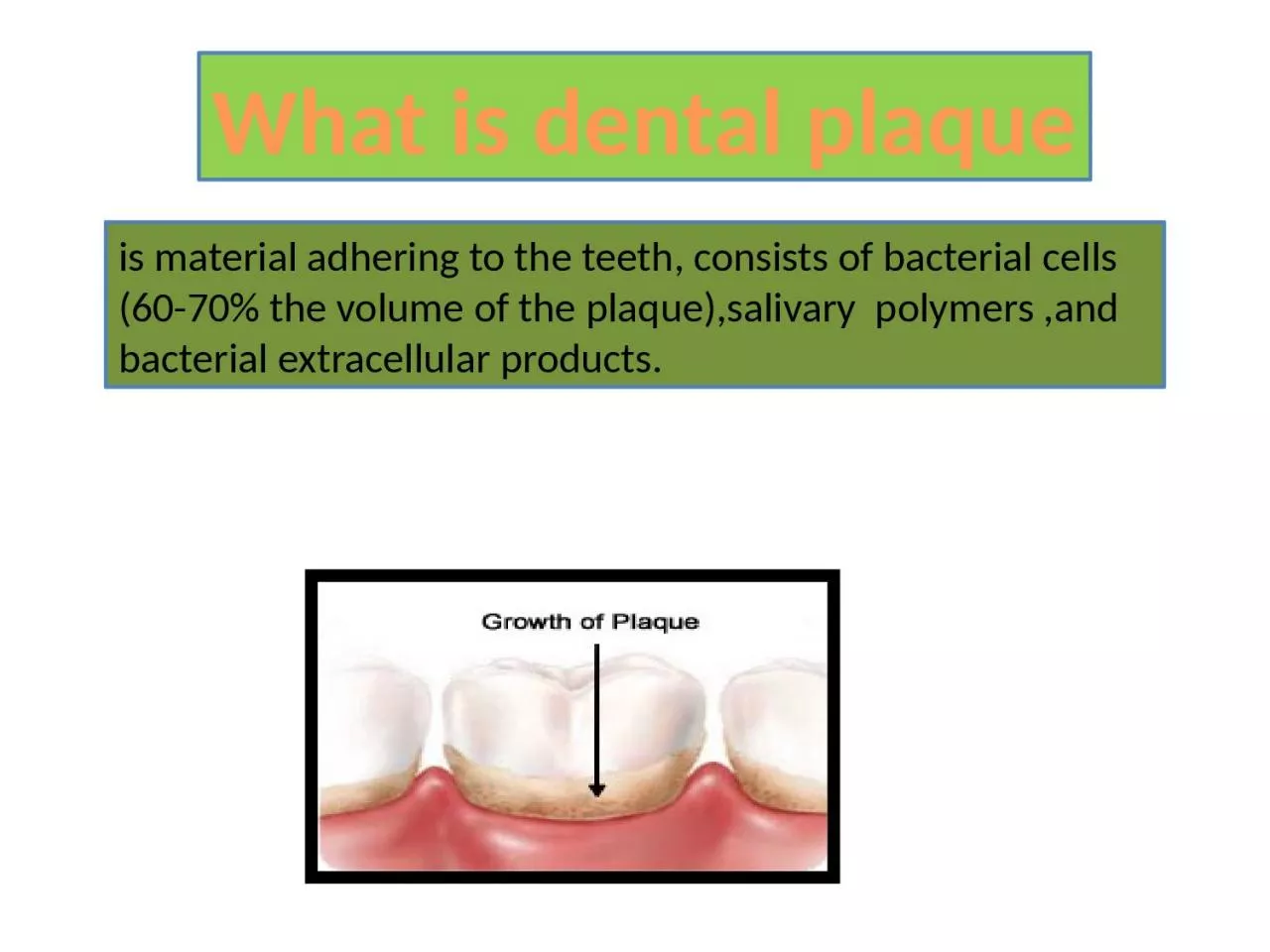

Plaque is a naturallyconstructed biofilm in which the accumulation of bacteria may reach a thickness of 300500 cells on the surfaces of the teeth These accumulations subject the teeth and gingival tissues to high concentrations of bacterial metabolites which result in dental disease ID: 1045187
Download Presentation The PPT/PDF document "What is dental plaque is material adheri..." is the property of its rightful owner. Permission is granted to download and print the materials on this web site for personal, non-commercial use only, and to display it on your personal computer provided you do not modify the materials and that you retain all copyright notices contained in the materials. By downloading content from our website, you accept the terms of this agreement.
1. What is dental plaqueis material adhering to the teeth, consists of bacterial cells (60-70% the volume of the plaque),salivary polymers ,and bacterial extracellular products.
2. Plaque is a naturally-constructed biofilm, in which the accumulation of bacteria may reach a thickness of 300-500 cells on the surfaces of the teeth.These accumulations subject the teeth and gingival tissues to high concentrations of bacterial metabolites, which result in dental disease .The dominant bacterial species in dental plaque are Streptococcus sanguis and Streptococcus mutans , both of which are considered responsible for plaque.
3.
4.
5.
6. Dental Caries
7. Dental caries is a pathological process of destruction of tooth structure by microorganisms.It is also known as tooth decay and is commonly called "cavities." Definition: Dental caries is an irreversible microbial disease of the calcified tissues of the teeth, characterized by demineralization of inorganic portion and destruction of organic substance of the tooth which often leads to cavitations.
8. To understand dental caries remember the oral microflora .Dental plaque (the oral flora which adhere to teeth) leads to breakdown of tooth enamel leading to caries. Organisms predominant in plaque are of the genus Streptococcus, with Streptococcus mutans being the species most important in the formation of dental caries. S. mutans have several properties that are important in the carious process: First, they colonize on tooth surfaces. Second, they synthesize insoluble polysaccharides from sucrose. This allows their adhesion to smooth surfaces and appears to be important in the formation of smooth surface caries. Third, they ferment sucrose to form lactic acid.
9. Streptococcus mutans and Lactobacillus are important in the formation of dental caries. Both bacteria are acidogenic ,meaning that they can produce acids and can survive and even produce acids in a low pH environment. Lactic acid is a strong acid that is effective in demineralization of tooth structure.It can dissolve the tooth substance (calicium phosphate in the form of hydroxyapatite crystals). Streptococcus mutans intiate the process of dental caries , while Lactobacillus species are not important in the initiation of caries but in its continuation.
10. How dental caries occur Lactic acid is produced by lactic acid producing bacteria in the plaque (mostly S. mutans) from the fermentation of sugar and other carbohydrates in the diet of the host.Lactic acid and other organic acids which accumulate in dental plaque initiate caries by causing localized demineralization and initial weakening of the enamel. Streptococcus mutans and Streptococcus sanguis are most consistently been associated with the initiation of dental caries. It is not ,however , the only cause of dental decay . After initial weakening of the enamel ,various oral bacteria gain access to interior regions of the tooth . Lactobacilli , Actinomyces , and various bacteria are `secondary invaders that contribute to the progression of the lesions to dentin and cementum.
11.
12.